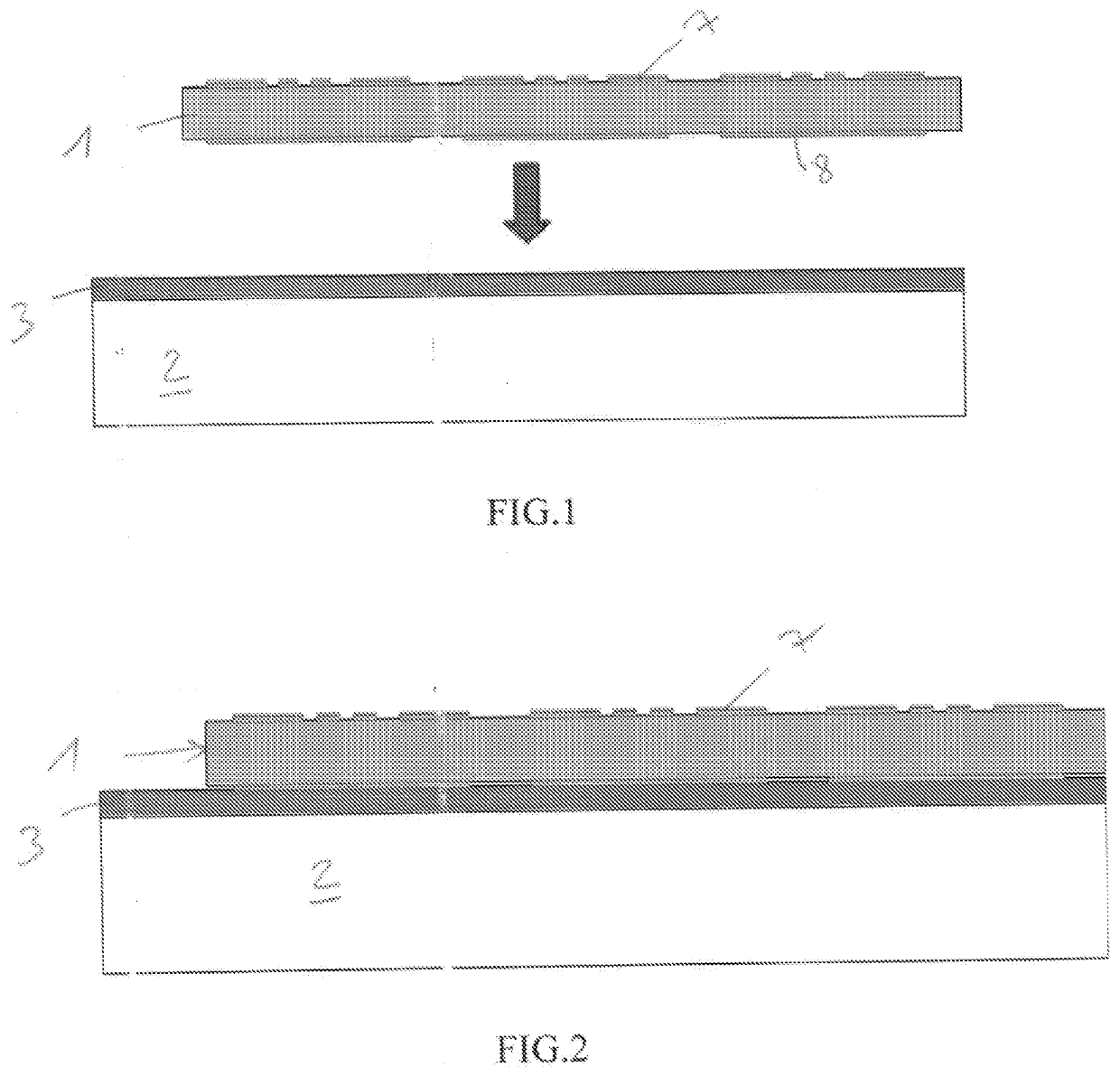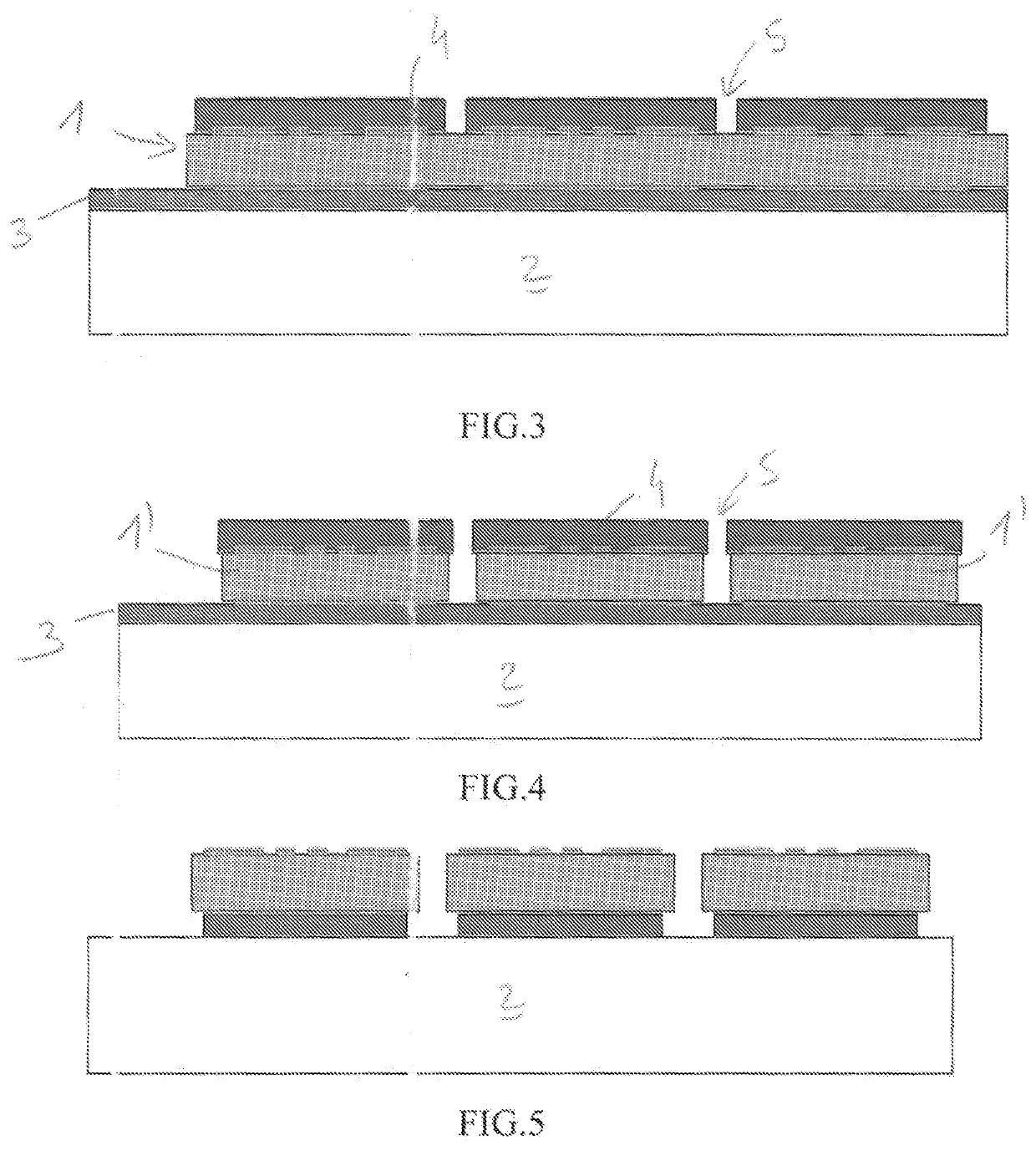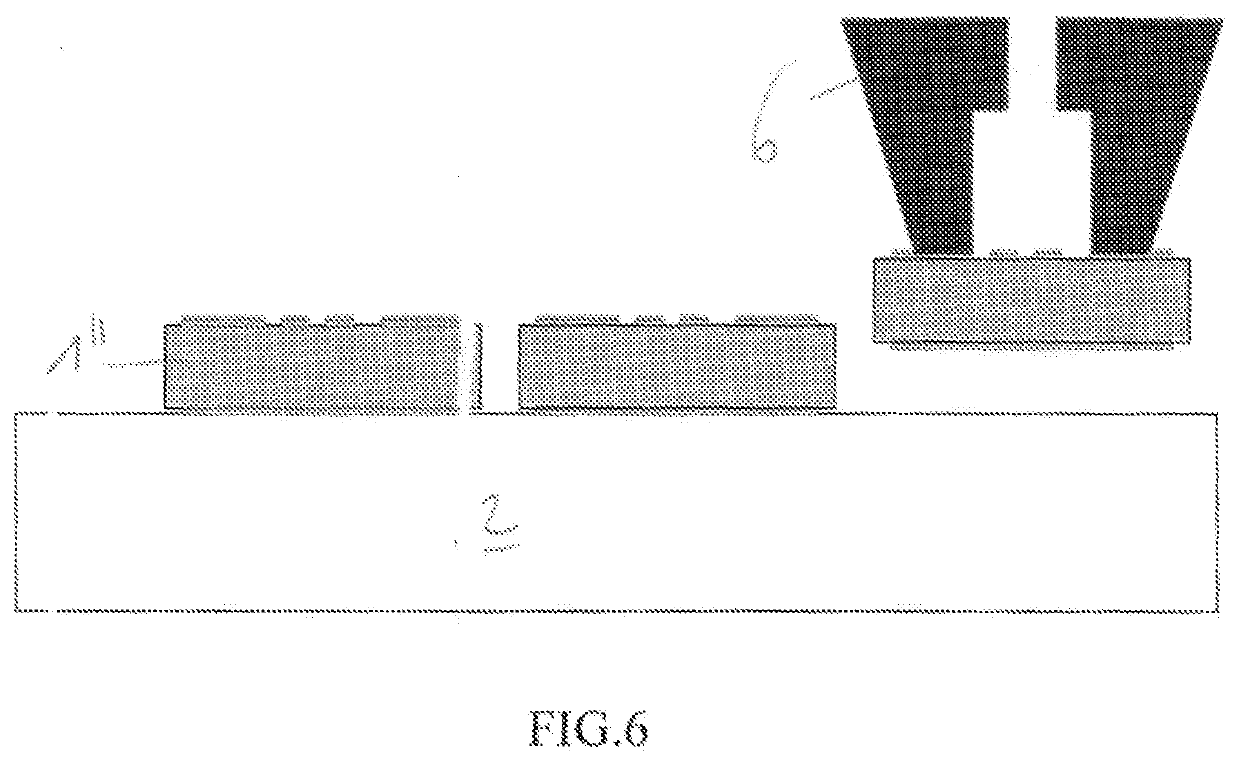Process for separating a plate into individual components
a technology of individual components and plates, applied in the field of separation of plates, can solve the problems of imposing more constraints, reducing the accuracy of measurement results, and reducing the risk of damage to the plate, so as to eliminate the sacrificial layer
- Summary
- Abstract
- Description
- Claims
- Application Information
AI Technical Summary
Benefits of technology
Problems solved by technology
Method used
Image
Examples
Embodiment Construction
[0113]Identical reference signs are used from one figure to another in order to designate identical or similar elements.
[0114]With reference to FIG. 1, a rigid substrate 2 is provided, for example a sapphire substrate.
[0115]This substrate 2 is covered with a sacrificial layer 3.
[0116]This sacrificial layer is composed of more than 99% by mass of polymer molecules, for example polypropylene carbonate molecules.
[0117]This polymer material 3 can, for example, be applied on the substrate by the same usual methods of application of a photosensitive resin.
[0118]The polymer can be applied in solution in a solvent, the solvent evaporating rapidly after the application.
[0119]The evaporation of the solvent can be terminated by an annealing at a temperature less than the decomposition temperature of the polypropylene carbonate.
[0120]A plate 1 is deposited on this polymer material 3, which is firmly attached by applying a mechanical pressure perpendicular to the plate, at a temperature above th...
PUM
 Login to View More
Login to View More Abstract
Description
Claims
Application Information
 Login to View More
Login to View More - R&D
- Intellectual Property
- Life Sciences
- Materials
- Tech Scout
- Unparalleled Data Quality
- Higher Quality Content
- 60% Fewer Hallucinations
Browse by: Latest US Patents, China's latest patents, Technical Efficacy Thesaurus, Application Domain, Technology Topic, Popular Technical Reports.
© 2025 PatSnap. All rights reserved.Legal|Privacy policy|Modern Slavery Act Transparency Statement|Sitemap|About US| Contact US: help@patsnap.com



